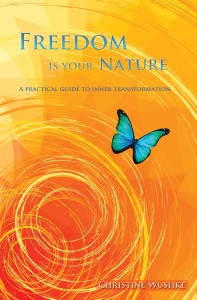Are you ready to take your understanding of fascia to a new level?
Do you ever wonder how you could move with greater ease, efficiency, and joy?
Is injury or chronic pain a regular feature in your life or your clients’ lives?
Join us for a four-day-intensive of incorporating myofascial release and biotensegrity, along with pain science, into a blend of movement, meditation and self-healing that will empower you to move freely on your mat and in your life.
In order to really understand fascia, you need to understand the principles of biotensegrity” – Joanne Avison
Drawing from principles of biotensegrity, myofascial release and pain science, this week of professional development* will offer you and your clients more freedom and ease in daily tasks. In this training, we will be exploring how to move in harmony with body, mind and spirit by deepening our understanding of fascia, biotensegrity, and your nervous system, along with discovering functional movements from the inside out. This is particularly helpful for pain management and when working with chronic pain populations.
*This 4-day training can be used as a 50-hour stand-alone CEU certificate, or as part of your 300-hour Advanced Myofascial Yoga and Biotensegrity Yoga Alliance registered teacher training. This workshop is a blend of synchronous (live via Zoom) and asynchronous (a combination of live workshops and online self-paced) learning. You will have the option to attend the live training as well as receive bonus material to study at your own pace. To obtain your 50-hour certificate you need to attend the live workshop, work through the self-study portion, and submit your quiz answers. If you are not needing a certificate, you are free to move through the material in whatever way works best!
Christine is truly unique in that she teaches yoga within a biotensegrity myofascial model and knows how to embody a trauma-informed approach…I highly recommend studying with Christine and her guest teachers.” – Former Student
*A 200-hour RYT prerequisite is required for entry into this training. (Exceptions can be made in some cases for registered members of the 200-hour myofascial yoga program. Please enquire at myofascialyoga33@gmail.com)
In this training, we will cover topics such as:
- The parallels between polyvagal theory and pain science, and how to create an environment of safety for your yoga classes and your clients in pain.
- Understanding biotensegrity to understand movement, and how to get the most out of your yoga or movement practice.
- Understanding movement compensation patterns: why they happen, how to bring unconscious movement habits into conscious awareness, and where they can be changed to become more efficient.
- How to work safely and effectively with chronic pain populations.
- Understanding the true purpose of body tension, and how to bring it into balance and integrity in all body types.
- Developing yoga sequences to bring the forces of tension and compression into balance for all body types.
- Understanding the link between chronic pain and fear of movement, and how to bring safe healing back into your clients’ life for pain reduction and improved strength and function.
- How to read bodies and assess tension patterns to bring about positive change for all body types.
Dates: March 16 – 19, 2023
Hours: 9:00 am to 5:00 pm (Mountain), Thursday through Sunday
Investment: $299 – $899*
Platform: Zoom
*Sliding scale rates are in effect during the pandemic, please pay what you can afford.
Some partial scholarships are available, click here to apply.
Regular Registration:
- Pay via PayPal
- Register on Zoom (If PayPal does not take you to a registration webpage, please reach out to myofascialyoga33@gmail.com)
.
What is biotensegrity?
If you are a yoga teacher working with chronic pain populations, or even with athletes who want to sharpen their performance, incorporating the principles of biotensegrity is invaluable. Biotensegrity brings a focus on balancing the two forces of tension and compression. The word tensegrity is the blend of the words “tensile” and “integrity.” The philosophy is that when tension and compression are in integrity, the body is in balance and its energy can be used optimally and efficiently. Ideally, this looks like smooth, controlled, and efficient movement. When there has been injury or stress, the tension and compression relationship can get out of balance and postural tension in one area of the body can lead to excess compression in other areas.
How do these imbalances occur? Our bodies and brains love efficiency, so when fascia restricts due to injury or repetitive stress, our body needs to adapt to the new limitations (or demands) and find new pathways for movement forces. Sometimes this looks like a change in movement habits to avoid pain, and sometimes it is a lack of mobility or flexibility (for example, due to muscle protection).
For the sake of efficiency, the body will very quickly “learn” this new habit and integrate it as a new normal so that we can get busy focusing on other important things. This habit then becomes unconscious, meaning that you are doing it but you don’t know you are doing it. Incorporating mindfulness into movement practices is something we’ll be addressing in this training as one of the key elements to restoring the biotensegral balance of our movements. This allows us to become aware of old habits, to shift movements into conscious awareness, and to then choose balanced and healthy movements to reflect a more balanced and healthy life.
Lead Instructor
Guest Teachers






